Have you ever wanted to draw like a professional artist, but not sure where to start? One of the first things you need to understand is the difference between charcoal and graphite drawing. With both mediums providing different effects it’s important to know what they are capable of doing. In this blog post, we will be exploring the differences between charcoal and graphite drawings as well as provide tips on how you can make use of each art material in your project. Whether you’re a complete beginner or an experienced artist looking for more knowledge, get ready to find out everything there is about charcoal vs graphite drawing!
Are Creative Hobbies Suitable for Everyone?
Creative hobbies are becoming more and more popular among people of all ages. Whether it’s painting, sculpting, or writing, most people can find something they enjoy doing in their spare time that allows them to flex their creative muscles and express themselves. With so many options available, is there a right way to go about starting out with these types of activities? [1]
The answer is yes! Depending on your interests and skill level, there are a few important considerations to make before beginning any creative hobby.
First and foremost, it’s important to think about how much time you can realistically commit to the activity. For example, if you only have small amounts of free time each week, you may want to opt for something that requires less maintenance such as drawing or photography, instead of a more involved craft like knitting or woodworking.
Next, it’s crucial to think about what type of creative outlet will best suit your personality. If you’re more outgoing and enjoy working with others, consider joining a club or taking a class to learn a new skill. On the other hand, if you tend to be more introverted, having an independent activity that doesn’t require large groups of people may be better for you. Finally, don’t be afraid to try something new! Even if you don’t end up enjoying it as much as you thought you would, it’s important to keep an open mind and explore different options. [2]
How to Draw Professionally?
If you’ve been dreaming of becoming an artist for years, learning how to draw professionally can be a daunting prospect. After all, there are many techniques and approaches to consider before getting started on your artwork. To help narrow down the choices, here are five tips that will have you drawing like a professional in no time:
Start with the Basics
Before you jump into full-blown artwork, take some time to develop the basic skills needed for drawing. Consider spending time developing your pencil grip and learning how to measure shapes and proportions accurately. Additionally, try sketching simple objects before moving on to more complex pieces. [3]
Invest in Quality Art Supplies
Quality art supplies can make a huge difference in the quality of your artwork. Investing in quality pencils, paper, brushes, and other materials will ensure that you’re able to create beautiful pieces that convey the emotion you desire.
Use Reference Photos and Draw From Life
To learn how to draw realistically, it’s essential to use reference photos or draw from life. This can help give you a better understanding of anatomy and composition, which are both key elements of professional artwork.
Follow Tutorials and Learn From Professionals
There are countless art tutorials available online that can help you brush up on your skills or learn a new technique quickly. However, it’s also important to study the works of renowned professionals; doing so will give you an understanding of what makes professional artwork so captivating.
Practice and Push Yourself
No matter how much you’ve studied or how expensive your supplies are, the most important factor in becoming a professional artist is practice. Spend time every day honing your skills by sketching from life or experimenting with new techniques. Additionally, push yourself to try out new methods and find unique ways to express your creativity. [4]
What Tools are Useful for Drawing?
Drawing can be a great way to express creativity, tell a story, or simply let loose. But in order to create the perfect piece of work, it is important to use the right tools. The tools you choose will depend on the type of drawing that you plan on doing, as well as your level of experience with art and drawing.
Here are some options For beginners:
- Pencils: If you are just getting started with drawing, pencils are a great option for achieving detailed and realistic results. Depending on the type of pencil you use, the lead can be harder or softer — resulting in either dark or light lines.
- Charcoal: You may not think of charcoal when it comes to drawing but charcoal can be extremely versatile. Charcoal is a great medium for creating bold and harsh lines that you cannot achieve with a pencil.
- Markers: Like pencils, markers come in different varieties — from permanent to water soluble. If you want to create deep colors or even just enhance shades, markers are a great option.
For more experienced artists:
- Paint Brushes: Nothing compares to the classic paint brush when it comes to creating vibrant and beautiful works of art. Paint brushes can help you achieve a range of effects from soft watercolors to rich oils.
- Air Brush: If you want to create smooth gradients or special effects, then an airbrush is your best bet. This tool allows you to create intricate details with minimal effort.
- Pens: Fine point pens are perfect for creating precise lines and curves that would be difficult to achieve with other tools. Depending on the type of pen you use, you can create a variety of effects — from sketchy strokes to perfectly straight lines.
Regardless of your level of experience, there is an array of drawing tools available to help you create amazing artwork. From classic tools such as pencils and paint brushes, to modern tools like airbrushes and markers, there is something for everyone! The most important thing is to experiment with different tools and see which ones work best for your drawing style. [5]
Types of Artist Graphite
Artist-quality graphite is an essential tool for all kinds of artists. There are many different types of graphite available on the market and each type offers unique benefits when it comes to creating artwork. Here, we will discuss the various types of artist graphites available so you can decide which one is right for you.
Woodless Graphite
Woodless graphite is a solid block of graphite without any wood in it. This type of graphite is great for sketching and shading because it offers a good balance between hardness and softness. It can also be used to draw fine lines, making it ideal for detailed work.
Graphite Pencils
Graphite pencils are the most common type of artist graphite. They come in a variety of hardness levels and can be used for both sketching and detailed work. Graphite pencils are also easy to sharpen, so they’re great for working on multiple projects at once.
Mechanical Pencils
Mechanical pencils are similar to regular graphite pencils but they require less sharpening because they use a lead that does not need to be sharpened. This makes them ideal for people who need to draw quickly and accurately without having to constantly sharpen their pencils. They come in various sizes and hardness levels, so you can find one that fits your needs perfectly.
Graphite Sticks
Graphite sticks are great for shading and blending because they allow for smooth transitions between colors. They also come in a variety of hardness levels, so you can find one that works best for your particular project. Graphite sticks are more durable than other types of graphite and won’t break as easily, making them ideal for frequent use.
Crayons
Crayons are a fun and easy way to add color and texture to your artwork. They come in a wide variety of colors, so you can easily find the perfect hue for your project. Crayons are also great for blending and shading because they offer softer textures than other types of artist graphites. [6]
Pros and Cons of Using Graphite for Drawing
Using graphite for drawing can offer a variety of advantages and disadvantages, depending on the artist’s goals or objectives. Graphite is an incredibly versatile medium that allows for a wide range of techniques and styles, making it perfect for any level of drawing skill. Here are some pros and cons to consider when deciding if graphite is right for you:
Pros:
- Graphite pencils come in a variety of degrees of hardness or softness, so you can create a spectrum from very dark to light.
- You can easily blend and smudge your drawings to create interesting textures and effects.
- You don’t need expensive equipment or supplies—graphite pencils are relatively inexpensive and easy to find.
- Graphite is highly versatile—you can create a range of effects from very realistic drawings to highly stylized illustrations.
Cons:
- Graphite pencils require sharpening, which can be time consuming and messy.
- Depending on the paper you use, your graphite pencils may need to be pressed hard to make an impact, which can leave marks on the paper.
- Graphite is prone to smudging and smearing if you don’t use a fixative, so your drawings may not last as long.
- If you are working on a drawing for a very long time, the graphite may begin to fade.
Overall, graphite is an excellent choice for any artist looking to explore a variety of styles and techniques. With its many advantages and some disadvantages, graphite drawing can be a great way to hone your skills. The versatility of the medium also allows you to experiment with different approaches to see what works best for you. [7]
Types of Artist Charcoal
Artist charcoal is an essential tool for any artist, and there are many different types of artist charcoal available. Whether you’re a beginner or a professional, it’s important to understand the differences between each type so that you can choose the right one for your needs.
Willow Charcoal
is the most common type used by artists, due to its versatility and affordability. It’s made of twigs or small branches from a willow tree, which have been burned in low oxygen until they become black and brittle. Willow charcoal produces a light gray tone with some texture when used on paper surfaces.
Compressed Charcoal
It is made of wood or vegetable matter that has been crushed and combined with a binder, then compressed into sticks or pencils. The result is an intense black color that can be used to create dramatic effects on paper. Compressed charcoal is usually harder than willow charcoal, making it ideal for fine details and long lines.
Carbon Charcoal
This type of charcoal is made from petroleum pitch, which has been heated and pressed into sticks. Carbon charcoal is a very dark color, so it’s often used for creating shadows or for outdoor sketches. It’s also the most permanent of all the charcoal, making it great for long-term artwork.
Charcoal Pencils
These are pencils that have been filled with charcoal dust and are great for making precise lines. Charcoal pencils can be used on a variety of surfaces, including paper, canvas, wood, and metal. They come in various grades of hardness and are easily blended to create different tones.
White Charcoal
White charcoal is made from combustible materials such as sulphur or magnesium oxide that have been burned until they turn white. This type of charcoal creates a softer tone than regular charcoal and can be used to highlight or add detail to artwork. [8]
Pros and Cons of Using Charcoal for Drawing
When it comes to drawing, charcoal is an extremely versatile material that can be used in many different ways. It’s great for adding texture and depth to your work, but it also has its drawbacks. Before you start using charcoal as part of your artistic practices, consider some of the pros and cons associated with it.
Pros:
- Charcoal is incredibly versatile, allowing you to create subtle effects and changes in your work. You can use it for shading, line work, and creating texture.
- Charcoal pieces are easy to erase and make corrections to – simply wipe away the charcoal with a clean cloth or paper towel. This makes it great for practicing techniques without worrying about making mistakes.
- Charcoal is very cost effective, meaning you can buy a lot of it without breaking the bank.
Cons:
- The mess factor of using charcoal is pretty high – it tends to make quite a bit of dust and residue that can easily get all over your hands and clothes.
- It’s also not great for detail work as the charcoal can smudge and blend together too easily.
- Charcoal doesn’t last forever – it will eventually wear down or need to be replaced with new supplies. [9]
How to Make Your Drawing Persistent?
Drawing has always been a great way to express yourself and capture your ideas on paper. Whether it is sketching out a landscape, creating an abstract painting or just doodling, making your drawing persistent can be very rewarding. There are many ways to make your drawings more permanent so that you can share them with others and keep them for years to come.
Step 1: Choose an Appropriate Medium
To ensure that your drawing will last for a long time, it is important to choose the right medium. If you are planning on making a painting, choose high quality paints and canvas that will withstand fading over time. For sketches or drawings, use archival paper and archival-grade pencils or charcoal to guarantee that your work won’t be damaged by the elements.
Step 2: Preserve Your Drawing
To make sure that your drawing is protected, you should take measures to preserve it. If you created a painting, have it professionally framed with UV-protective glass or acrylic and hang it in a room with low humidity. For sketches or drawings, carefully store them in an acid free portfolio or sleeve so that they are not exposed to the elements. You can also have your work professionally digitized and preserved in an online archive for easy access anytime.
Step 3: Share Your Drawing
Don’t forget to share your drawing with others! Take pictures of it and post it on social media platforms or send digital versions via email to your friends and family. This way, you can share your creativity with the world and ensure that it lasts for generations to come!
Step 4: Keep Practicing
Making drawings persistent doesn’t mean that you should stop there. Continue to practice and hone your skills so that you can become a better artist in the long run. Look for new techniques and tools to incorporate into your art and develop a unique style that you can be proud of. With practice, you can create amazing pieces that will stand the test of time! [10]
Charcoal vs. Graphite Drawing: What’s the Difference?
Both charcoal and graphite are popular tools for drawing on paper, and both can be used to make stunning works of art. But what exactly is the difference between them?
- Charcoal is a natural medium crafted from charred wood or other organic materials. It has an unmistakable dark black hue that makes it ideal for creating bold, dramatic drawings. Charcoalis also very versatile and can be sharpened to a fine point or smudged with fingers or paper towels for softer, more blended effects.
- Graphite is an artificial form of carbon made from treating pure carbon under high pressure. It’s available in several different degrees of hardness, ranging from 6H (hardest) to 6B (softest). Graphite creates a more delicate look than charcoal, with lines that are finer and softer. Graphite is also much easier to erase if mistakes need to be corrected. [11]
FAQs
What is the difference between pencil drawing and charcoal drawing?
Pencil and charcoal are two of the most popular mediums used in drawing. While pencil is more forgiving, allowing for lighter shading and subtle lines, charcoal offers a greater range of contrast between light and dark values. With pencil drawing, you can capture the details more accurately, while with charcoal you can create dramatic effects with your shadows and highlights.
Why is charcoal better than pencil?
Charcoal is softer than graphite, which allows for a much looser and more expressive drawing style. It also goes on smoother and lighter, which makes it easier to create subtle shading effects. Additionally, charcoal produces a darker color than pencils and can be blended much better than other drawing materials.
Finally, charcoal is much cheaper than many other types of drawing materials. This makes it a great choice for budding artists who are working on a budget. Plus, due to its affordability, you don’t have to worry about wasting a lot of money if you make mistakes or want to experiment with new techniques.
Why do artists like to draw with charcoal?
Charcoal is the perfect medium for capturing these subtle yet powerful elements of a composition. It allows an artist to create both light and dark contrast in an artwork, giving it more depth and texture than other materials such as graphite or pastels. Charcoal also has the unique ability to capture pure black tones which add great emphasis to any composition. It is also a very forgiving medium as mistakes can easily be erased or blended with other shades. Artists are also drawn (no pun intended) to charcoal because of its affordability and longevity – it lasts longer than other drawing materials, so it’s ideal for those looking to create long-lasting works of art.
Can you use graphite and charcoal in the same drawing?
The answer is yes. Graphite pencils come in a variety of grades that make them ideal for creating details, shadows, highlights, and texture. While charcoal has a much softer quality which makes it great for capturing bolder lines and shading large areas. Both materials offer unique advantages when used together to create a drawing.
When combining graphite and charcoal, it is important to note that the two materials can smudge together or create unintended marks. To prevent this, lay down a layer of either material first before beginning to blend the two together. Also, be sure to use an eraser in between layers if needed to ensure accurate blending.
Useful Video: Which one to Choose?: Graphite OR Charcoal pencils?
To Sum Up
Charcoal and graphite may both be black in color, but they have some major differences when it comes to using them for art. Charcoal is perfect for those who love the boldness of deep rich blacks and who love the ability to smudge without a trace. Graphite however, is better for every day sketches and drawings since it will not smudge as easily and provides finer details. Depending upon what type of artwork someone is working on, charcoal or graphite can be used in tandem to create something truly unique. Of course, neither makes you more or less skilled but they can provide different levels of detail that artists of any skill set should try experimenting with at least once. Whether that’s trying to draw with both on the same piece of paper or using them both together for shading areas, there are numerous ways these materials can complement each other in a drawing.
References:
- https://www.miragenews.com/benefits-of-creative-hobbies-exploring-arts-and-996380/
- https://ohcraftyday.com/start-a-creative-hobby/
- https://www.wikihow.com/Draw-Like-a-Pro
- https://allinonehighschool.com/drawing-professionally/
- https://www.artsy.net/article/artsy-editorial-pencils-papers-erasers-start-drawing
- https://www.fabercastell.com/blogs/creativity-for-life/graphite-pencil-lead-degree-hardness
- https://sandyallnock.com/graphite-vs-colored-pencil-pros-cons-and-tips/
- https://noellaroos.com/what-are-the-different-charcoals-used-in-art/
- https://glytterati.com/blogs/articles/graphite-vs-charcoal
- https://thevirtualinstructor.com/continuous-line-drawing.html
- https://www.artsupplies.co.uk/blog/what-is-the-difference-between-graphite-and-charcoal/


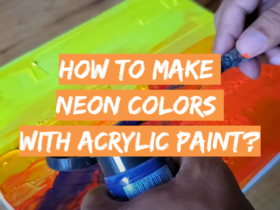

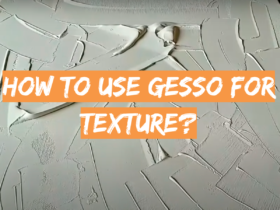





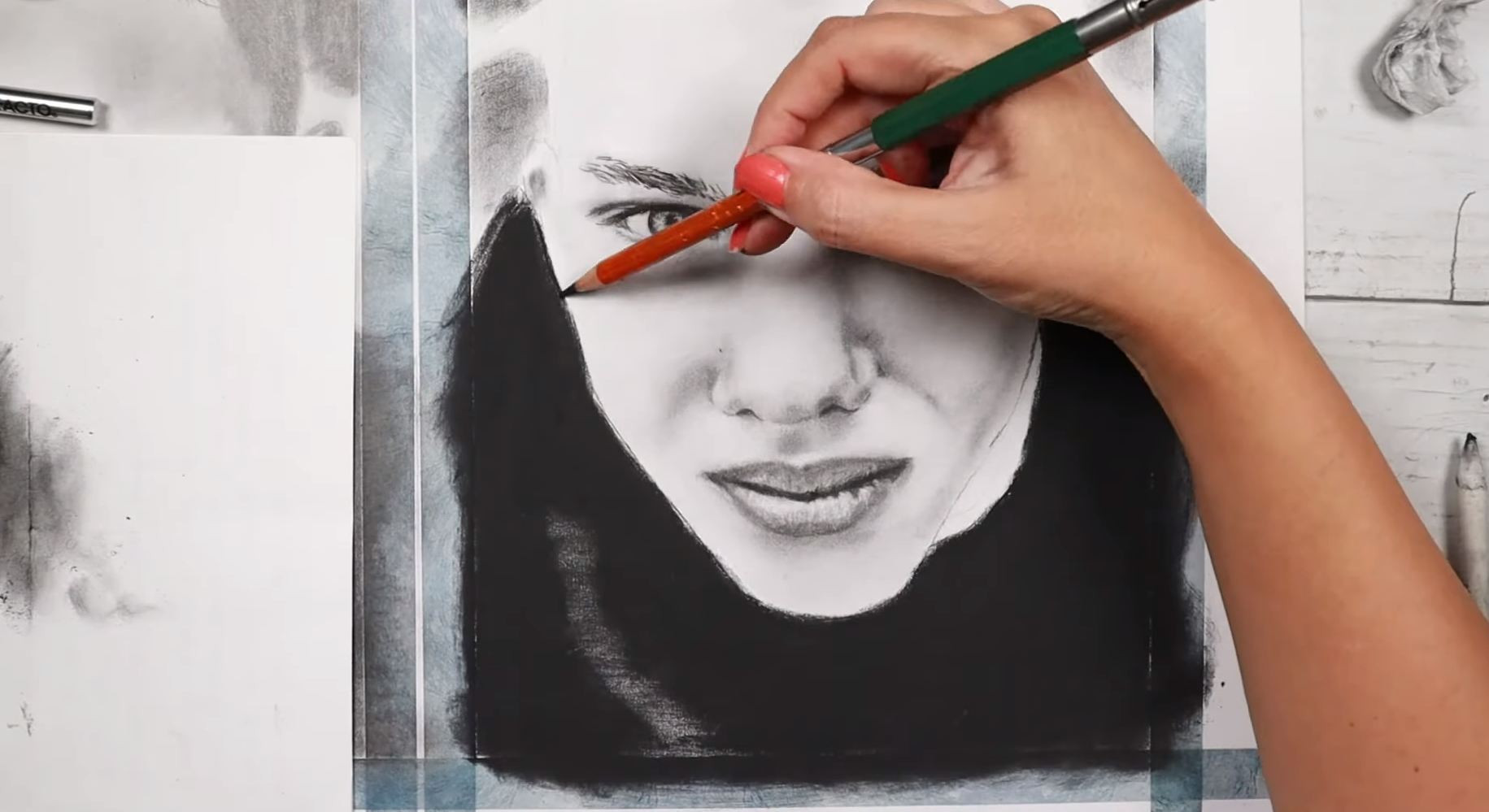

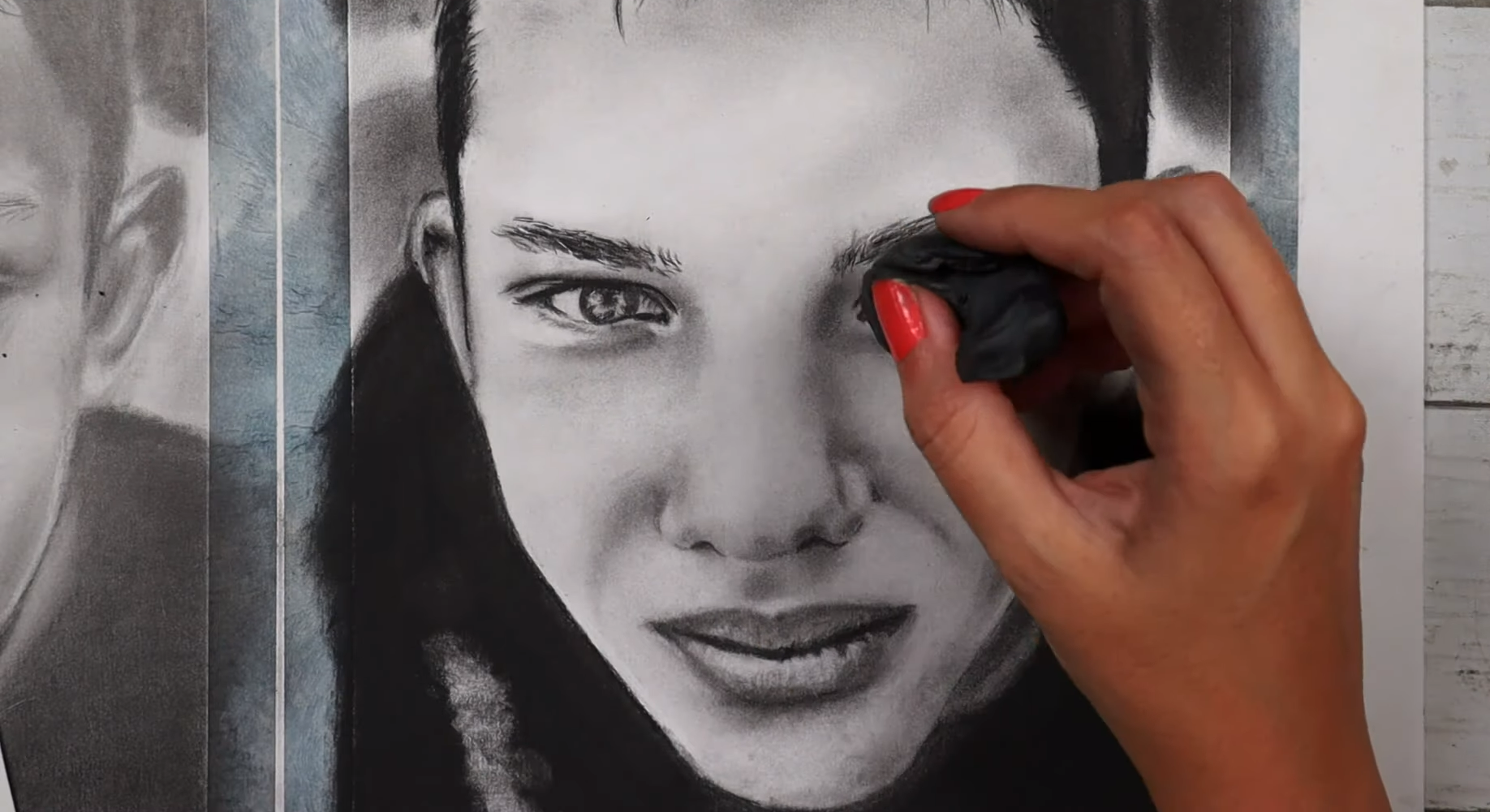



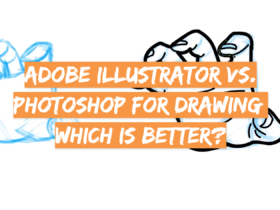
Leave a Review